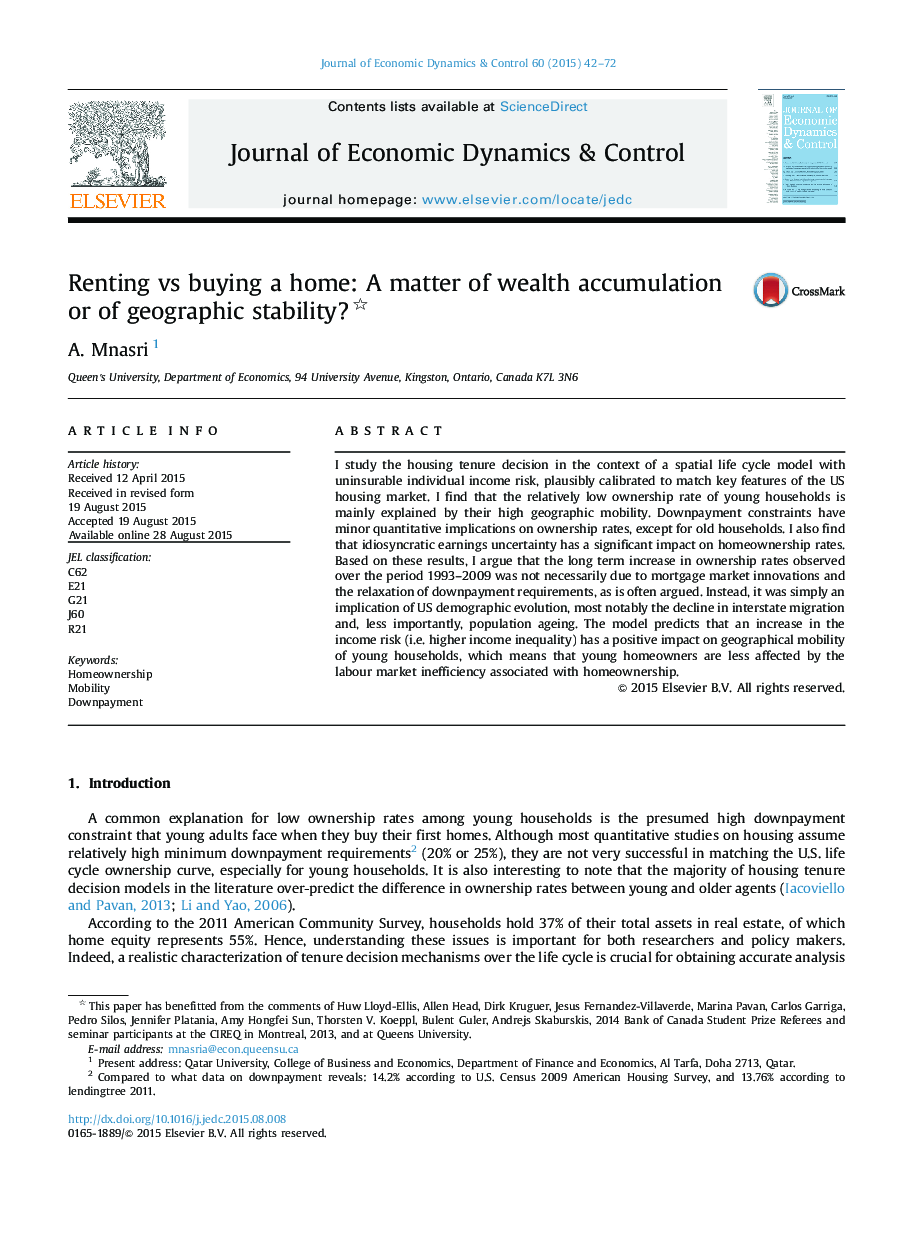| Article ID | Journal | Published Year | Pages | File Type |
|---|---|---|---|---|
| 5098209 | Journal of Economic Dynamics and Control | 2015 | 31 Pages |
Abstract
I study the housing tenure decision in the context of a spatial life cycle model with uninsurable individual income risk, plausibly calibrated to match key features of the US housing market. I find that the relatively low ownership rate of young households is mainly explained by their high geographic mobility. Downpayment constraints have minor quantitative implications on ownership rates, except for old households. I also find that idiosyncratic earnings uncertainty has a significant impact on homeownership rates. Based on these results, I argue that the long term increase in ownership rates observed over the period 1993-2009 was not necessarily due to mortgage market innovations and the relaxation of downpayment requirements, as is often argued. Instead, it was simply an implication of US demographic evolution, most notably the decline in interstate migration and, less importantly, population ageing. The model predicts that an increase in the income risk (i.e. higher income inequality) has a positive impact on geographical mobility of young households, which means that young homeowners are less affected by the labour market inefficiency associated with homeownership.
Related Topics
Physical Sciences and Engineering
Mathematics
Control and Optimization
Authors
A. Mnasri,
